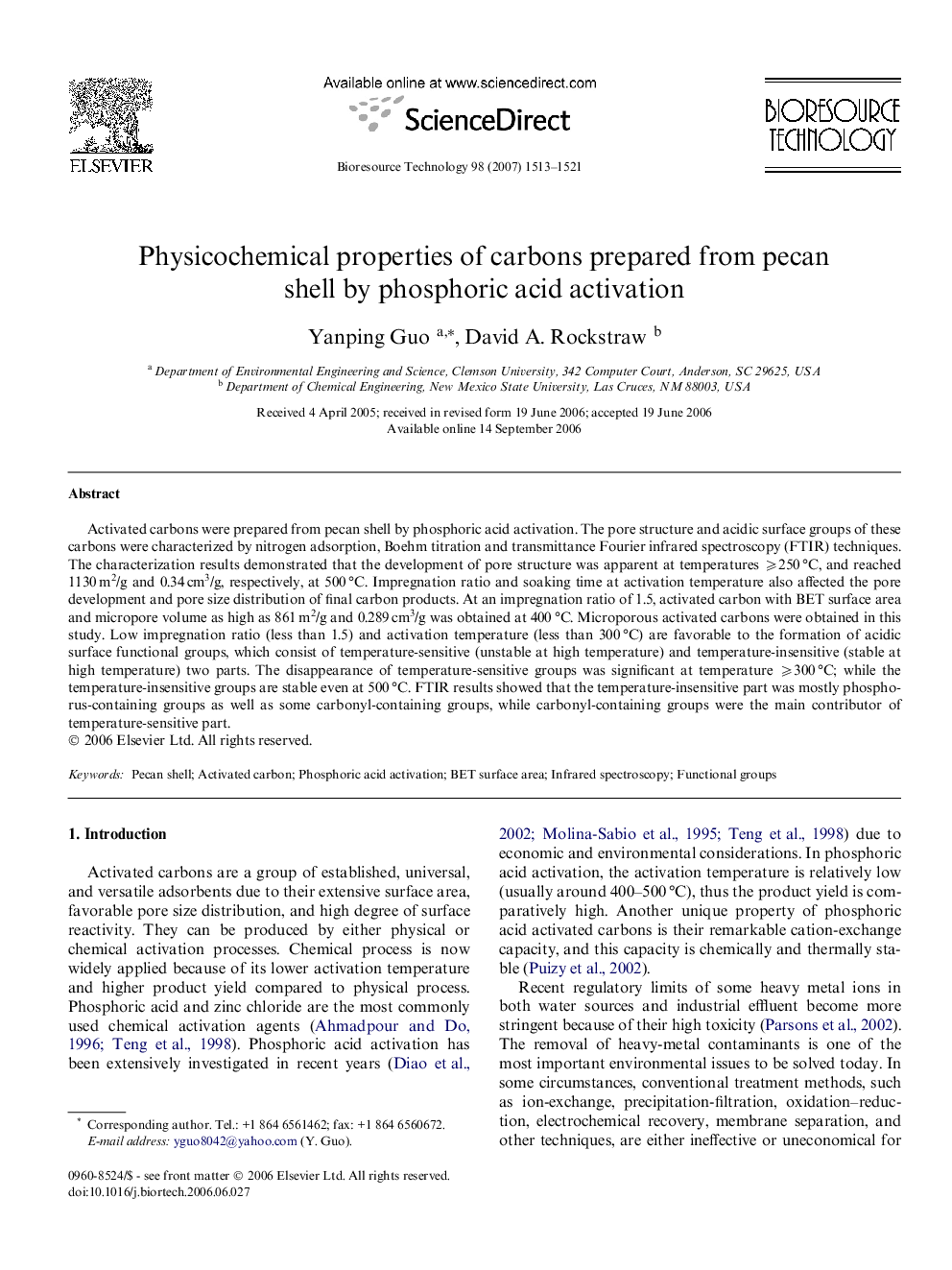| Article ID | Journal | Published Year | Pages | File Type |
|---|---|---|---|---|
| 685661 | Bioresource Technology | 2007 | 9 Pages |
Activated carbons were prepared from pecan shell by phosphoric acid activation. The pore structure and acidic surface groups of these carbons were characterized by nitrogen adsorption, Boehm titration and transmittance Fourier infrared spectroscopy (FTIR) techniques. The characterization results demonstrated that the development of pore structure was apparent at temperatures ⩾250 °C, and reached 1130 m2/g and 0.34 cm3/g, respectively, at 500 °C. Impregnation ratio and soaking time at activation temperature also affected the pore development and pore size distribution of final carbon products. At an impregnation ratio of 1.5, activated carbon with BET surface area and micropore volume as high as 861 m2/g and 0.289 cm3/g was obtained at 400 °C. Microporous activated carbons were obtained in this study. Low impregnation ratio (less than 1.5) and activation temperature (less than 300 °C) are favorable to the formation of acidic surface functional groups, which consist of temperature-sensitive (unstable at high temperature) and temperature-insensitive (stable at high temperature) two parts. The disappearance of temperature-sensitive groups was significant at temperature ⩾300 °C; while the temperature-insensitive groups are stable even at 500 °C. FTIR results showed that the temperature-insensitive part was mostly phosphorus-containing groups as well as some carbonyl-containing groups, while carbonyl-containing groups were the main contributor of temperature-sensitive part.
